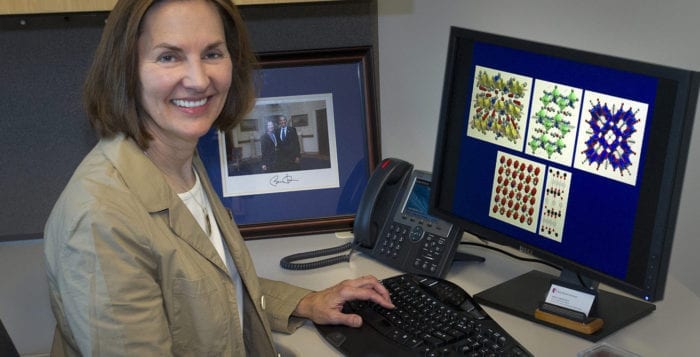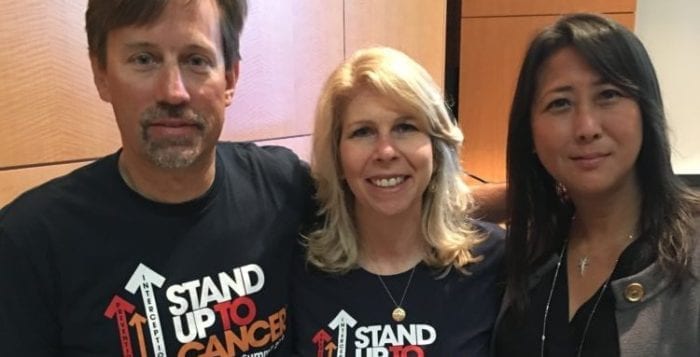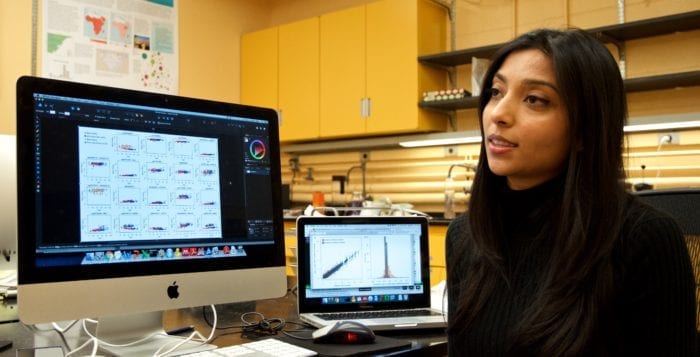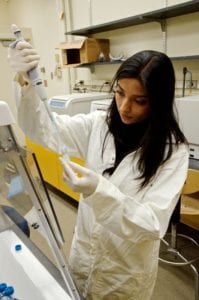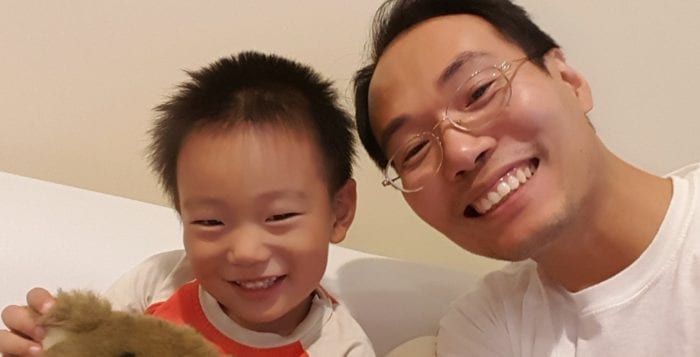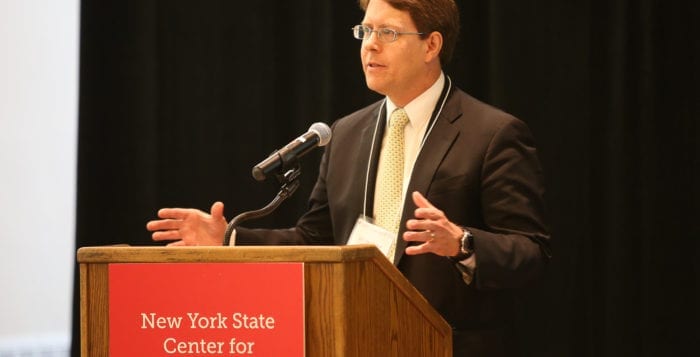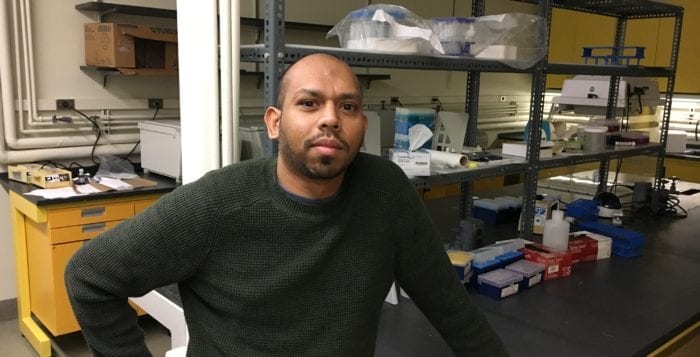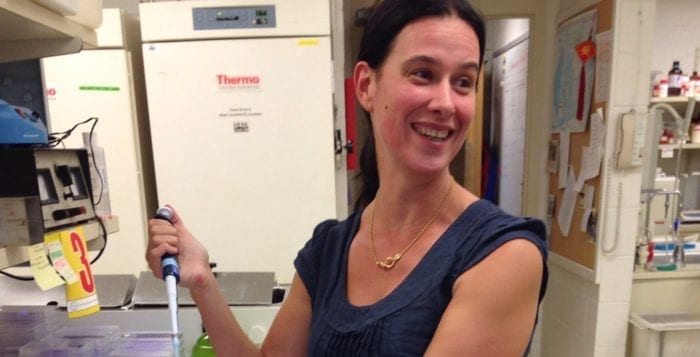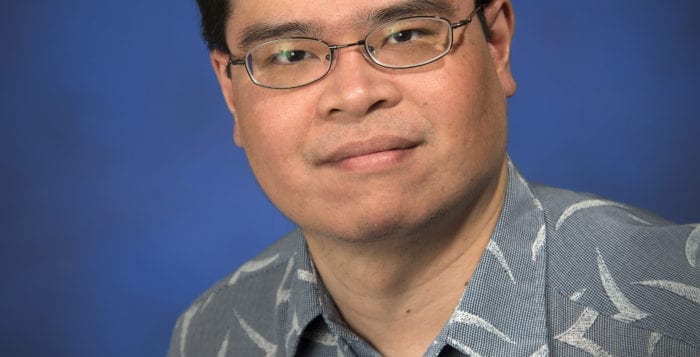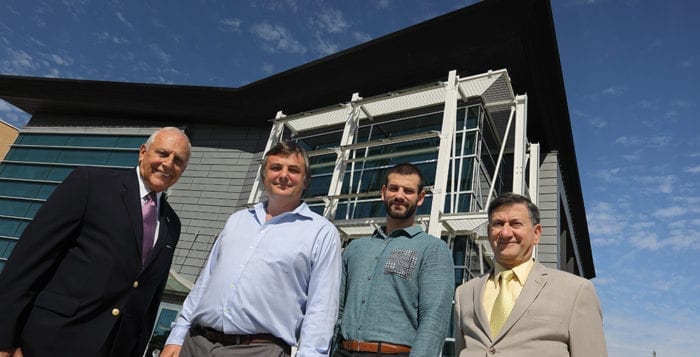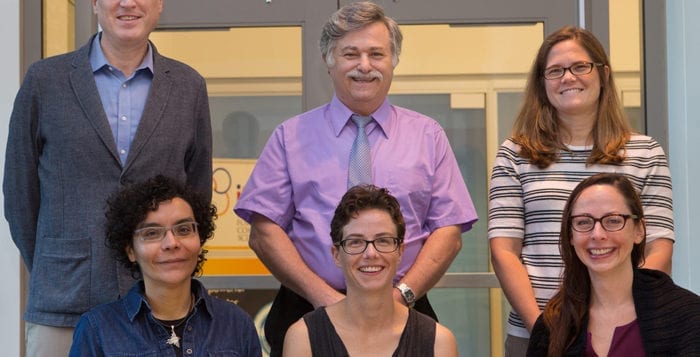By Daniel Dunaief
Pop them in the back of a cell phone and they work, most of the time. Sometimes, they only do their job a short time, discharge or generate so much heat that they become a hazard, much to the disappointment of the manufacturers and the consumers who bought electronic device.
Esther Takeuchi, a SUNY distinguished professor in the Departments of Chemistry and Materials Science and Engineering and the chief scientist in the Energy Sciences Directorate at Brookhaven National Laboratory leads a team of scientists who are exploring what makes one battery work while another falters or fails. She is investigating how to improve the efficiency of batteries so they can deliver more energy as electricity.
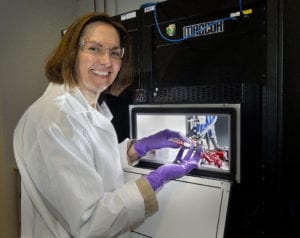
The process of manufacturing batteries and storing energy is driven largely by commercial efforts in which companies put the ingredients together in ways that have, up until now, worked to produce energy. Scientists like Takeuchi, however, want to know what’s under the battery casing, as ions and electrons move beneath the surface to create a charge.
Recently, Takeuchi and a team that includes her husband Kenneth Takeuchi and Amy Marschilok, along with 18 postdoctoral and graduate students, made some progress in tackling energy storage activity in iron oxides.
These compounds have a mixed track record among energy scientists. That, Takeuchi said, is what attracted her and the team to them. Studying the literature on iron oxides, her graduate students discovered “everything from, ‘it looks terrible’ to, ‘it looks incredibly good,’” she said. “It is a challenging system to study, but is important to understand.”
This offered promise, not only in finding out what might make one set of iron oxides more effective in holding a charge without generating heat — the energy-robbing by-product of these reactions — but also in providing a greater awareness of the variables that can affect a battery’s performance.
In addition to determining how iron oxides function, Takeuchi would like to “determine whether these [iron oxides] can be useful and workable.” Scientists working with iron oxides didn’t know what factors to control in manufacturing their prospective batteries.
Takeuchi said her group is focusing on the linkage between small-scale and mesoscale particles and how that influences battery performance. “The benefit of iron oxides is that they are fairly inexpensive, are available, and are nontoxic,” she said, and they offer the potential of high energy content. They are related to rust in a broad sense. They could, theoretically, contain 2.5 times more energy than today’s batteries. “By understanding the fundamental mechanisms, we can move forward to understand their limitations,” she said, which, ultimately, could result in making these a viable energy storage material. T
akeuchi is also looking at a manganese oxide material in which the metal center and the oxygen connect, creating a tube-like structure, which allows ions to move along a track. When she started working with this material, she imagined that any ion that got stuck would cause reactions to stop, much as a stalled car in the Lincoln Tunnel leads to long traffic delays because the cars behind the blockage have nowhere to go.
Takeuchi said the ions don’t have the same problems as cars in a tunnel. She and her team believe the tunnel walls are porous, which would explain why something that looks like it should only produce a result that’s 5 percent different instead involves a process that’s 80 percent different. “These escape points are an interesting discovery, which means the materials have characteristics that weren’t anticipated,” Takeuchi said. The next step, she said, is to see if the researchers can control the technique to tune the material and make it into the constructs that take advantage of this more efficient flow of ions.
Through a career that included stops in Buffalo and North Carolina and West Virginia, Takeuchi, who has over 150 patents to her name, has collected numerous awards and received considerable recognition. She won the 2009 National Medal of Technology and Innovation, a presidential award given at a ceremony in the West Wing of the White House. Takeuchi developed compact lithium batteries for implantable cardiac defibrillators.
Takeuchi is currently a member of the National Medal of Technology and Innovation Nomination Evaluation Committee, which makes recommendations for the medal to the president. Scientists who have known Takeuchi for years applaud the work she and her team are doing on Long Island. “Dr. Takeuchi and her research group are making great advances in battery research that are very clearly promoted by the strong relationship between Stony Brook and BNL,” said Steven Suib, the director of the Institute for Materials Science at the University of Connecticut.
Indeed, at BNL, Takeuchi has used the National Synchrotron Light Source II, which became operational last year. The light source uses extremely powerful X-rays to create incredibly detailed images. She has worked with three beamlines on her research. At the same time, Takeuchi collaborates with researchers at the Center for Functional Nanomaterials at BNL.
Although she works with real-world experiments, Takeuchi partners with scientists at Stony Brook, BNL and Columbia University who focus on theoretical possibilities, offering her an insight into what might be happening or be possible. There are times when she and her team have observed some interaction with batteries, and she’s asked the theorists to help rationalize her finding. Other times, theorists have suggested what experimentalists should search for in the lab.
A resident of South Setauket, Takeuchi and her husband enjoy Long Island beaches. Even during the colder weather, they bundle up and enjoy the coastline. “There’s nothing more mentally soothing and energizing” than going for a long walk on the beach, she said.
In her research, Takeuchi and her team are focused on understanding the limitations of battery materials. Other battery experts believe her efforts are paying dividends. Suib said the recent work could be “very important in the development of new, inexpensive battery materials.”

